Plant correctly and more efficiently
Planting correctly is essential for establishing a thriving garden. Here’s a step-by-step planting guide to help you plant efficiently and ensure your plants have the best chance of success.
Choose the Right and Healthy Plants
Start by selecting plants that are healthy and vigorous. Look for signs of good health, such as vibrant leaves, strong stems, and a robust root system. Healthy plants are more likely to adapt and thrive in your garden.
Plants for the Right Place
Assess the conditions of your planting site. Different plants require varying amounts of sunlight, moisture, and soil type. Choose plants that are suited to the specific conditions of your space to minimize stress and maximize growth.
Plants Native or Adaptable to Your Area
Opt for native plants or those well-adapted to your climate. These plants are usually more resilient, requiring less water and maintenance. They also provide essential habitats for local wildlife, enhancing biodiversity in your garden.
Inspect Under the Leaves
Before planting, check the underside of the leaves for pests or diseases. Healthy leaves should be free of discoloration and damage. If you notice any issues, choose another plant to ensure a healthy start.
Strong and Robust Leaves
Look for plants with thick, robust leaves, as this often indicates good health. Plants with weak or wilted leaves may struggle to establish themselves in your garden.
New Growths
Select plants that show signs of new growth, such as fresh leaves or buds. This is a clear indication that the plant is healthy and ready to thrive in its new environment.
Flowers and Buds
If you’re choosing flowering plants, pick those with healthy buds and blooms. Avoid plants with faded or wilted flowers, as they may not establish well or may be past their prime.
Roots Out of the Ground
If possible, examine the root system. Healthy roots should be white and firm. If you see roots circling the pot or pushing through the drainage holes, the plant may be root-bound and could struggle once planted.
Easy to Propagate Plants
Consider starting with plants that are easy to propagate. Herbs, succulents, and some perennials can be easily grown from cuttings or divisions, allowing you to expand your garden efficiently without significant investment.
Planting in Pots and Containers
Planting in pots and containers is a versatile and rewarding way to garden, allowing you to cultivate plants in limited spaces or to enhance your outdoor décor. Here’s a comprehensive guide to help you get started.
Location and Climate Type
Before you begin planting, consider the location and climate type of your area. Different plants have varying light and temperature requirements. Ensure your pots are placed in a spot that receives the appropriate amount of sunlight—whether it’s full sun, partial shade, or full shade. Additionally, protect your containers from harsh winds and extreme temperatures, which can stress your plants.
Select the Pot
Choosing the right pot is essential for healthy plant growth. Look for pots with drainage holes to prevent waterlogging, which can lead to root rot. Ensure the pot material is suitable for your climate; for example, plastic pots are lightweight and retain moisture, while ceramic and terracotta pots provide better insulation but can be heavy.
Ideal Pot Size
The size of the pot is crucial for the health of your plants. Generally, larger pots provide more space for roots to grow, allowing for better moisture retention and nutrient access. A good rule of thumb is to select a pot that is at least 6-12 inches larger in diameter than the current pot the plant is in, depending on its root system.
Plastic Versus Terracotta
Both plastic and terracotta pots have their advantages. Plastic pots are lightweight, affordable, and retain moisture well, making them ideal for plants that require consistent watering. Terracotta pots, on the other hand, are porous and allow for better air circulation, which can be beneficial for certain plants. However, they may dry out faster, requiring more frequent watering.
Regular Soil Versus Potting Soil
Using the right soil is critical for container gardening. Regular garden soil can compact in pots, hindering root growth and drainage. Instead, opt for high-quality potting soil designed specifically for containers. This type of soil is lighter, drains well, and often contains nutrients and moisture-retaining additives to support healthy plant growth.
Change to a Larger Pot
As your plants grow, they may outgrow their containers. Signs that it’s time to repot include roots emerging from the drainage holes or stunted growth. When repotting, select a pot that is 1-2 sizes larger and refresh the soil to provide new nutrients. Gently loosen the roots before placing the plant in the new pot to encourage growth.
Design First
Before planting, take some time to design your container arrangement. Consider the height, color, and texture of the plants you want to include. Layer taller plants in the back or center, with shorter ones in front or around the edges for visual interest. Mixing different plant types—such as flowers, foliage, and herbs—can create a dynamic and attractive display.
Transplant from Pot to Pot with Success :Planting guide
Transplanting is an essential skill in gardening that helps ensure your plants thrive as they grow. Here’s a guide to successfully transplanting your plants from one pot to another.
What Does Transplanting Mean?
Transplanting refers to the process of moving a plant from one container or location to another. This can involve transferring a plant to a larger pot to accommodate its growth or moving it to a new area in your garden. Proper transplanting helps reduce stress on the plant and encourages healthy root development.
Why Do We Need To Do It?
Transplanting is necessary for several reasons. As plants grow, their roots may outgrow their current containers, leading to restricted growth and nutrient deficiencies. Transplanting allows for better soil quality, more space for root expansion, and improved access to water and nutrients. It can also help rejuvenate plants that are struggling in their current environment.
When is the Best Time to Transplant?
The best time to transplant depends on the type of plant. Generally, early spring or early fall is ideal for most perennials and outdoor plants, as the weather is milder, and plants are not actively flowering. For indoor plants, transplanting can be done anytime, but it’s best to do so when the plant is not in bloom. Always check specific needs for each plant type.
General Steps for an Effective Transplant:
- Prepare the New Pot: Choose a pot that is 1-2 sizes larger than the current one, ensuring it has drainage holes. Fill it with fresh potting soil appropriate for the plant species.
- Water the Plant: Water the plant a day before transplanting to reduce stress and make it easier to remove from the pot.
- Remove the Plant: Carefully remove the plant from its current pot by gently squeezing the sides or tapping the bottom. Use a trowel if necessary to loosen the soil.
- Inspect the Roots: Check for any damaged or tangled roots. Trim away any dead or rotten roots with clean, sharp scissors.
- Place in the New Pot: Position the plant in the center of the new pot, ensuring it sits at the same depth it was previously. Fill in around the roots with fresh potting soil, pressing gently to eliminate air pockets.
- Water Thoroughly: After planting, water the plant well to help settle the soil and hydrate the roots.
Should You Fertilize or Prune After Transplanting?
It’s generally advisable to wait a couple of weeks before fertilizing after transplanting. This allows the plant to recover and adapt to its new environment. If you notice any dead or damaged leaves, prune them back to encourage healthy growth. Avoid heavy pruning immediately after transplanting to minimize stress.
Conclusion
Planting correctly and efficiently is key to fostering a thriving garden. By choosing healthy plants suited to your specific conditions, inspecting for potential issues, and understanding the best practices for planting in pots and transplanting, you set the stage for successful growth. Remember to consider factors like pot size, soil type, and plant arrangement to create a visually appealing and healthy environment. With careful attention and proper techniques, you can ensure your plants not only survive but flourish, bringing beauty and vitality to your garden space. Happy planting!


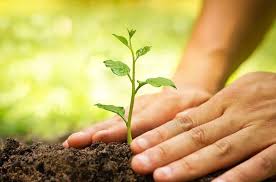
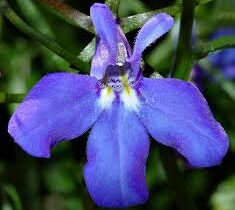
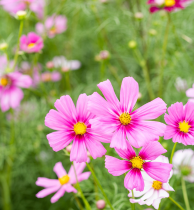
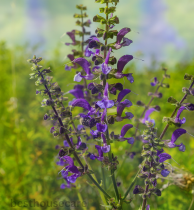
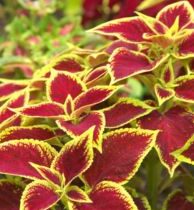
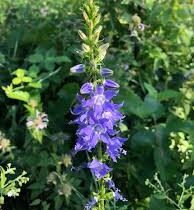
Leave a Reply
View Comments